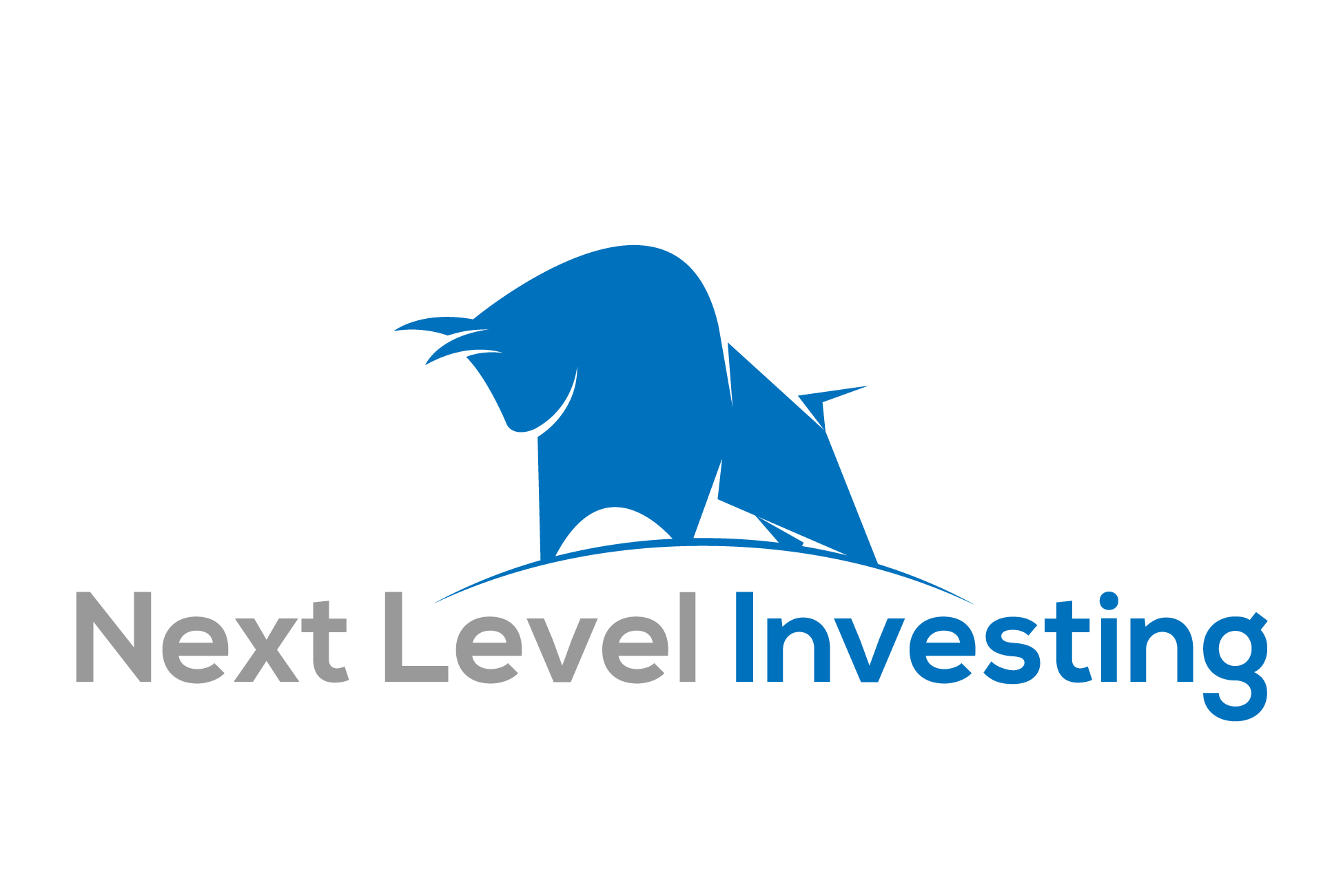How well do you know yourself?
It seems like a simple question, with potentially, an obvious answer. If you’re anything like me, you think you know yourself pretty well. After all, you’ve lived with yourself for many years now, how could you not, right?
But, what if we really don’t know ourselves at all…
I’ve made investment mistakes in the past, and let me tell you. They were not a good time. Because of this, I’m always looking for ways to limit the number of mistakes I make in the future. I know if I can do this, I will retire happy and wealthy.
Ben Graham (considered the father of value investing) said “The investor's chief problem - and even his worst enemy - is likely to be him/herself”.
Could that be my problem?
I knew other people were prone to making silly mistakes, I’d seen it. To act before they think, getting caught up in the moment. But, that was other people… not me! I was sure I was ‘Spock-like’ in all my investing decisions. Always using logic, never letting my emotions get in the way…
Well, recently I’ve been looking into this a little deeper, and to my surprise (and for some reason, delight), It turns out, I don’t know myself at all… and odds are, (If you’re a Human Being that is) you don’t either. Don’t believe me? Well, let’s see how individual investors perform over time.
Investor performance
Let’s look at a recent chart showing just how bad the average investor returns have been over the last 20 years (up to 2015).
(Source: Blackrock.com)
I know, It’s sad. The average investor performance is simply terrible. You would expect that the average investor would only be a percent or two below the S&P return for the cost of fees, but instead, we underperformed the total market by an appalling 6.08% over 20 years. If at this point you're thinking ‘That’s not me, I invest in index and mutual funds. That’s probably a stock picker's return’, I'm sorry to say, you'd be mistaken. That 2.11% return comes from mutual fund investors.
The problem is that they (we) buy too close to the top, and sell to close to the bottom. They (we) are ruled by our emotions. Becoming overconfident when the market is at the top, and too scared to put their capital back in when the market bottoms out. In other words, we are ruled by our emotions.
You can see that the overwhelming reason for of our downfall is Psychological factors. It appears that we truly don’t know ourselves. (This evidence was found in the annual Dalbar Studies, which collects data on investor returns over a long period of time).
But, fear not my friend, for it doesn't have to be this way. We can teach ourselves to have a more thoughtful decision making process. It probably won’t be easy, after all, we’re battling hundreds of thousands of years of evolution here. But it certainly is possible.
So how can we be different, set ourselves apart from the crowd, and not become just another sad statistic? The trick will be to learn what biases are causing our downfall, and maybe more importantly, how to avoid them. Over the next few posts, we’ll discuss the most common mental pitfalls and behavioural challenges that every investor must master to become successful. Not only will we be learning about them, but we’ll discuss the strategies you can use to eliminate them. I’ll show you how some of the best investors in the world deal with these biases. We’ll do our best to learn from their mistakes, instead of having to make our own to get the same lessons.
After all, if we can avoid making large mistakes, we’ll be much more likely to retire earlier, and in abundance. That’s my goal anyway. What’s yours?
Recommended reading
Almost all the information for these next few posts came from these three books:
1. The little book of Behavioural Investing, by James Montier.
2. Thinking Fast and Slow, by Daniel Kahneman.
3. Influence, by Robert Cialdini.
If you only have time for one, read the little book of Behavioural Investing. It is truly eye opening, and written in a fun, and easy to digest manner. It’s honestly one of the best books I’ve read, and can’t recommend it enough.
Don’t be fooled by your ‘Bias blindspot’
All too often we can see these human judgment errors in others, but rarely do we see them in ourselves. It’s always ‘my friend Jim, the dividend investor’ or ‘Ryan the blogger’ who we see these biases in, not ourselves. This is what Montier describes as the ‘Bias Blindspot’.
For example:
In 2002, three researchers (Pronin, Lin, & Ross) asked a group of Americans to assess how likely the average American was to make a particular mental error in judgement, on eight well known biases (well known to psychologists). They were then asked to make the same assessment on themselves and how likely they were to make those same mental errors. Can you guess what the researchers found? You guessed it.
The group considered themselves much less susceptible to the biases then the average Americans. In other words, we all seem to be able to better recognize error in others, much better than we do in ourselves.
Answer me, these questions three…
Q1
A bat and a ball together cost $1.10 in total.
The bat costs a dollar more than the ball.
How much does the ball cost?
Q2
If it takes five machines, five minutes to make five widgets,
How long will it take 100 machines to make 100 widgets?
Q3
In a pond, there is a patch of lily pads. Every day the patch doubles in size.
If it takes 48 days for the patch to cover the entire lake, how long will it
Take to cover half of the lake?
These questions have three very obvious answers. Unfortunately, the obvious answer is not the correct one…
Let’s see how you did.
Q1 A
The usual answer here is $0.10
Actual answer: Ball = $0.05
Bat and ball = $1.10
Bat cost $1.00 more than the ball.
Bat = $1.05.
Ball - bat = $1.00 ($1.05 - $0.05 = $1.00)
Q2 A
The Obvious Answer = 100 Minutes.
Actual answer = 5 Minutes
With a little reflection, you can see that if it takes 5 machines 5 minutes to make five widgets, it will also take 100 machines 5 minutes to make 100 widgets (or 1 widget per machine, every 5 minutes).
Q3 A
Most common answer = 24 days.
Actual answer = 47 days.
If the patch doubles in size every day, then the day before the entire lake is covered, half of the lake must have been covered.
These three questions together are called the Cognitive Reflection Task, or CRT for short. Developed by Shane Frederick of Yale, the CRT test is more powerful than any other test for examining how often we rely on our emotions, rather than our logic, in our day to day lives.
How did everyone else do?
Try not to worry if you got one or more of these questions wrong... You’re not alone.
Of the 3500 people who took this test, only 17% got all three questions right and 33% got Zero questions right. Of this group, the highest scoring were MIT students, and only 48% of them managed to get all three questions correct. In other words, less than half of some of the best and brightest students in the world, managed to get all three questions correct…
What about the Pro’s?
Montier, Author of the Little book of behavioural finance, interviewed 600 professional investors. He interviewed fund managers, traders and analysts, and put all of them through the CRT test. How do you think they did?
Well, even among these so called professional investors, only 40% managed to get all three questions correct, 10% of them, didn’t get any right. And we trust these guys with our money? Kinda scary right?
What this means for us
What this means, is that all of us, yes, even you, are likely to heavily rely on emotional decision making. Even you brainiac’s with 180 IQ’s are not immune to these biases. In fact, our good friend Warren Buffett said;
“Success in investing doesn’t correlate with IQ once you’re above the level of 100. Once you have ordinary intelligence, what you need is the temperament to control the urges that get other people into trouble in investing”.
Our brains are all too happy to take the easy way out, the path of least resistance. This is how the majority of us live our lives, we make our decisions in the spur of the moment, allowing our emotions to rule us, rarely putting the extra effort in to ensure that our decision is in fact, the best one. This sadly, also happens to us when we invest. That’s we we see such horrible results over time.
Montiers findings
James Montier found that the results of the CRT test directly correlate to the vulnerability we have on a whole host of behavioral biases. In other words, the more questions you got wrong, the more powerful the biases will be. They especially correlate with:
- Loss Aversion.
- Conservatism. &
- Impatience
If at this point, you’re laughing because you got all three questions right, and thus think you’re immune? Think again. Two very powerful biases seem to be immune to the power of the CRT test:
- Over Optimism / Overconfidence. &
- Confirmatory Bias.
So, why do most people (us) get those questions wrong?
Well the truth is, it’s because we didn’t really think about it. We went with the first answer that popped into our heads, the obvious one, and didn’t give it a second thought. Why? well, our brains are lazy. Science has shown that it literally will cost you more energy to actually put effortful thought into it (through glucose depletion), so it just lets the easy answer be the right one. After all, we’re faced with thousands of small decisions every day, we can’t take our time on all of them, right?
Nobel Prize winner Daniel Kahneman, Author of Thinking Fast and Slow, breaks our mind down into two very separate systems. These systems dictate the decisions, actions, and directions we take each day. They are:
1. The Fast
This is our default system, it’s emotion driven and effortless. All thoughts and actions go through this system first, every time. This is also the system that caused you to get the CRT question wrong.
2. The Slow
This is our logic system. It weighs the facts and picks the best option available. The most important aspect of this system is that it requires Deliberate effort to use. This is the system that, if it wasn’t so lazy, would have told you that the ball must cost $0.05.
Even though we may not be able to dive deep into every decision we make, we certainly can put some extra thought into the investment decisions. Pausing and reflecting, making sure we aren’t just following the crowd, or getting caught up in the daily swings and excitement of the market. Being sure not to get caught up in the hot new IPO, or a Story Stock that’s ‘Destined’ for greatness. Surely now that we know we have these downfalls, we can simply practice self-control, and override our investment urges, right?! Sadly, our willpower may also fail us.
Self control is a muscle?
Back in 2000, two psychologists (Muraven & Baumeister) decided to test this theory: Does Self Control Resemble a Muscle? The experiment went like this.
The Individuals who participated in the study were not allowed to eat for three hours prior to the experiment (the experimenters made sure this happened over lunch… I know, mean!). They were then broken into three groups.
The first group, let’s say Group A, was brought into a room with a powerful scent of freshly baked, chocolate chip cookies filled the room (Getting hungry just thinking about it, right?). In this room were two trays. One tray, the source of the amazing aroma; Chocolate chip cookies. The other tray was filled with radishes. Group A was told that they could eat as many radishes as they wanted, but must not eat the cookies.
The second group, Group B (AKA the lucky ones), were presented with a similar scenario, but they were told that they could eat as many cookies as their little hearts desired (I’m paraphrasing here…).
Group C (AKA the control group) were brought into an empty room.
After 10 minutes, the groups were collected and moved into another room to perform a test. The test their given is one of those tricky ones where you are asked to trace a shape without lifting your pen off the paper, and without overlapping any of your previously drawn lines.
So, how do we think the groups performed? By this point, you probably have a guess. The group that wasn’t allowed to eat the cookies (group A) did much worse than the other two. In fact, they gave up on the test in less than half of the time that the other two groups did. Not only did they give up earlier, but they also attempted about half as many shapes. This dramatic decrease in willpower was caused by simply resisting the temptation of chocolate chip cookies. In other words, much like a muscle, willpower will ‘lose strength’ after exercising it.
Therefore, relying on willpower on its own, is going to be very tricky. How often are we tempted, when investing, with that proverbial chocolate chip cookie that seems to beckon to us. Maybe we resist the first, maybe even the second, but by the third, our willpower is gone, and we can’t resist and we make a poor investment decision.
As Montier says ‘Willpower alone is unlikely to be a sufficient defense against behavioural biases’.
Investing is simple, not easy.
This may be my favourite catch phrase (I certainly use it enough anyway). But it also happens to be true. Investing really is simple. You just buy great companies when they are trading in the market for less than what they’re worth (or less than their intrinsic value, if you prefer). Then you wait until the market prices them fairly or more then fair, and sell it back. Simple. But because of our behavioural biases, this is not easy. These biases kick in, and frankly, kick our butts. They prevent us from doing what we Know we should be doing.
Montier shares an observation from Billionaire Seth Klarman (author of the renowned Margin of Safety) on this very problem. He says:
“So, if the entire country became securities analysts, memorized Benjamin Graham’s The intelligent Investor and regularly attended Warren Buffett's annual shareholder meetings, most people would, nevertheless, find themselves irresistibly drawn to hot initial public offerings, momentum strategies, and investment fads. People would still find it tempting to day-trade and perform technical analysis of stock charts. A country of security analysts would still overreact. In short, even the best-trained investors would make the same mistakes that investors have been making forever, and for the same immutable reason - that they cannot help it
The difficult part, for me at least, is to know when this is happening, and to stop it. This is what we’re going to learn.”
Yikes. Ok, so this is what we’re doing here. Have I convinced you that you need to learn these things? I know I am. You can see that learning what these biases are, and how to defend ourselves is extremely important. If we don’t, we will fail, and we’ll have no idea why. Remember that average investor return of 2.11%? That won’t be us. Over the next few posts we’ll learn all our shortfalls and how to control them. You’ll want to bookmark these posts and re-read them from time to time. I know I’ll need a reminder.
Next time:
Our two brains; the Smart and the Lazy, the Fast and the Crazy.
Thanks for reading,
We’ll talk again soon
~Ryan Chudyk~
If you like this post, check out this one!
How did you even find this?
Hidden Fun Fact: One of my favourite books of all time is: Name of the wind by Patrick Rothfuss. I’m still waiting (impatiently) for book three in the series. It’s a must read.





Leave a Reply
Get in the Conversation, Share your opinion.